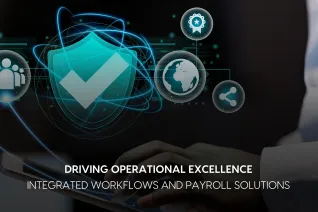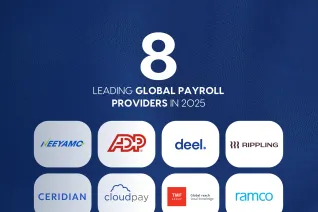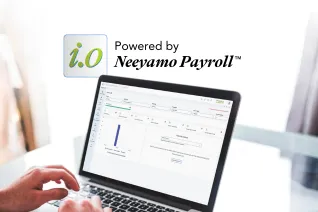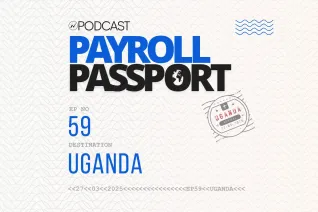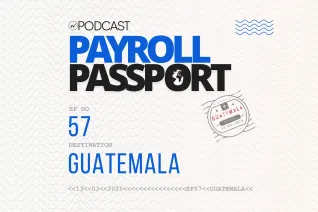Future-Proof Your Payroll: A Complete Guide to Streamlining Your Business Operations

In today's fast-paced business world, a robust payroll system isn't just a luxury—it's the backbone of successful enterprise operations. Beyond simply cutting checks, modern payroll systems are sophisticated command centers that orchestrate everything from precise wage calculations to tax compliance and benefits management.
Millions of businesses navigate a complex web of calculations, deductions, and regulatory requirements every payday. The right payroll system transforms this potential nightmare into a streamlined process, ensuring your employees are paid accurately and on time while keeping your business compliant with ever-evolving regulations.
Whether you're a growing startup or an established enterprise, understanding how to leverage these systems effectively can mean the difference between smooth operations and costly payroll mishaps.
1. Choosing the Right Payroll System
Choosing from a long list of payroll systems involves assessing your business needs. Key considerations include:
Company size and growth projections: A scalable payroll system should support multi-location operations, automatically update tax compliance, and integrate with HR systems. This future-proof solution minimizes disruptions and adapts to business growth.
- Payroll complexity: Payroll complexities arising from factors like multi-state employees or intricate benefit packages can lead to increased administrative burdens and potential errors.
- Budget constraints: Budgetary limitations can restrict the scope and functionality of a payroll system.
- Integrity requirements: Accurate data entry of employee details, including wages, taxes, and benefits, is crucial for payroll system setup. Regular audits ensure data consistency, especially for global businesses with complex tax regulations.
- Security needs: Essential data security practices in payroll software are top priorities. Payroll systems handle sensitive employee information, from Social Security numbers to bank account details. Ensure that the payroll system you choose complies with data protection laws like GDPR or CCPA and offers encryption and secure access controls to prevent breaches.
Cloud-Based vs. On-Premise Payroll Solutions
Businesses must decide between cloud-based or on-premise solutions when choosing a payroll system. Cloud-based payroll systems offer flexibility, remote access, and automatic updates, making them popular among businesses of all sizes. US HR and payroll software revenue surged 9.1% annually over the past 5 years to $20.6 billion in 2024. On-premise solutions offer more control but require greater IT resources for maintenance and updates.
READ MORE: The Role of Cloud Management in Enhancing Payroll Security and Efficiency
2. Setting Up a Payroll System
Integrating Payroll with HR and Accounting Software
Integrating payroll with HR and accounting streamlines processes, ensures consistency, and reduces errors.
Training and Support Resources
Most payroll software providers offer training and support to ensure businesses use the system effectively. Whether through online tutorials or dedicated customer support, these resources are invaluable during implementation and ongoing use.
Payroll Best Practices
- Ensure accurate data migration
- Integrate with existing HR/accounting systems
- Establish clear workflows
- Deploy employee self-service features
- Configure automated approvals
3. Payroll Compliance and Regulations
Key Labor Laws Impacting Payroll
Non-compliance with payroll laws can result in:
- significant fines
- legal fees
- reputational damage
For instance, failing to report employee taxes properly can lead to IRS penalties (failure to pay the penalty is 0.5% of unpaid taxes). Payroll systems designed to comply with all relevant regulations help businesses avoid these risks.
READ MORE: Payroll Companies Leveraging Software for Better Compliance Management
Managing Payroll Audits and Investigations
Payroll systems streamline audits by providing detailed records, ensuring compliance, and preventing penalties.
4. Time and Attendance Management
Accurate time and attendance tracking is vital to payroll accuracy. According to a recent survey, bookkeeping, payroll processing, and time tracking are the top 3 tasks SMBs want to delegate. Automated systems ensure employees are paid based on actual hours worked, reducing errors in manual data entry. These systems also help track overtime, comply with labor laws, and provide transparency for employees.
- Accurate pay, reduced errors, real-time data capture, eliminates manual tracking, and prevents time theft.
- Integrated time and attendance, biometric systems.
- Overtime management, automatic tracking, calculation, and scheduling.
- Accurate time and attendance data, integration with payroll.
- Compliance with labor laws, and automated time tracking.
5. Payroll Reporting and Analytics
Types of Payroll Reports
Payroll systems generate various reports, including labor cost reports, tax liability reports, and employee compensation summaries. These reports help businesses understand their payroll expenses and ensure accurate financial reporting.
Using Payroll Data for Decision Making
Payroll data offers valuable insights that can inform decision-making in adjusting staffing levels, budgeting for seasonal fluctuations, tracking employee absenteeism, and analyzing employee turnover.
Key Payroll Performance Indicators (KPIs)
Tracking key performance indicators (KPIs) helps businesses measure the efficiency of their payroll processes, such as:
- Payroll error rates
- Processing time
- Labor cost per employee
Payroll Analytics
Payroll analytics can help businesses identify inefficiencies in their processes. For instance, data may show that payroll errors are due to manual data entry, necessitating greater automation or better employee training. Insights can lead to significant improvements in payroll efficiency and decision-making.
READ MORE: Global Payroll Analytics: Unlocking Insights for Success
Wrapping Up: Streamlining Payroll for Success
In today's complex business environment, a well-designed payroll solution is a source of relief, ensuring accuracy and compliance with ever-changing labor and tax regulations. From selecting the right system to setting it up, processing payroll efficiently, and integrating it with HR and time tracking, a robust payroll system can save businesses time, reduce errors, and mitigate compliance risks. It scales with your business, ensuring efficiency, accuracy, and compliance.
Why choose Neeyamo for your Global payroll needs?
Unlock the power of seamless global payroll management with Neeyamo's expert global payroll services. Neeyamo helps you navigate complex payroll regulations in 160+ countries, ensuring compliance and minimizing risks. Not convinced yet? Here's why we're your ideal partner:
Regulatory Roadblocks? Confidently navigate complex international laws & regulations.
Irritated with Integration? Seamlessly stitch together your HR systems.
Chaotic Control? Command your global workforce from a single platform.
Tardy Transactions? Ensure prompt and precise payroll processing.
Doubtful Digital Defense? Shield your sensitive information from digital threats.
Neeyamo? Your passport to hassle-free global payroll!
If you are curious about how you can make this work and ease out your organization's life, talk to our experts or write to us at irene.jones@neeyamo.com.
Latest Resources
Stay informed with latest updates
If you're curious and have a thirst for knowledge pertaining to the HR, payroll, and EOR universe, don't miss out on subscribing to our resources.






